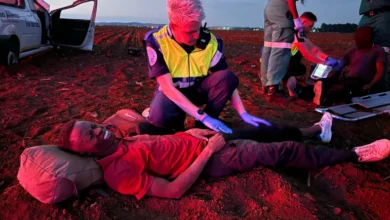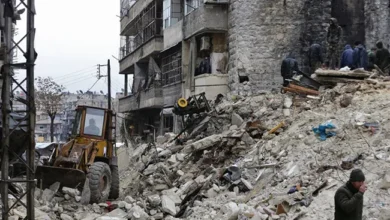Nowhere to run: The Afghan refugees caught in Israel’s war on Iran

On Friday, June 13, when Israeli missiles began raining down on Tehran, Shamsi was reminded once again just how vulnerable she and her family are.
The 34-year-old Afghan mother of two was working at her sewing job in north Tehran. In a state of panic and fear, she rushed back home to find her daughters, aged five and seven, huddled beneath a table in horror.
Shamsi fled Taliban rule in Afghanistan just a year ago, hoping Iran would offer safety. Now, undocumented and terrified, she finds herself caught in yet another dangerous situation – this time with no shelter, no status, and no way out.
“I escaped the Taliban but bombs were raining over our heads here,” Shamsi told Al Jazeera from her home in northern Tehran, asking to be referred to by her first name only, for security reasons. “We came here for safety, but we didn’t know where to go.”
Shamsi, a former activist in Afghanistan, and her husband, a former soldier in the Islamic Republic of Afghanistan before the Taliban returned to power in 2021, fled to Iran on a temporary visa, fearful of reprisals from the Taliban over their work. But they have been unable to renew their visas because of the cost and the requirement to exit Iran and re-enter through Taliban-controlled Afghanistan – a journey that would likely be too dangerous.
Life in Iran has not been easy. Without legal residency, Shamsi has no protection at work, no bank account, and no access to aid. “There was no help from Iranians, or from any international organisation,” she said.Internet blackouts in Tehran have made it hard to find information or contact family.
“Without a driver’s licence, we can’t move around. Every crossroad in Tehran is heavily inspected by police,” she said, noting that they managed to get around restrictions to buy food before Israel began bombing, but once that started it became much harder.
Iran hosts an estimated 3.5 million refugees and people in refugee-like situations, including some 750,000 registered Afghans. But more than 2.6 million are undocumented individuals. Since the Taliban’s return to power and the US withdrawal from Afghanistan in 2021, thousands of Afghans, including activists, journalists, former soldiers, and other vulnerable people, have crossed into Iran seeking refuge.
Tehran province alone reportedly hosts 1.5 million Afghan refugees – the majority of them undocumented – and as Israel targeted sites in and around the capital, attacking civilian and military locations during the 12-day conflict, many Afghans were starkly reminded of their extreme vulnerability – unprotected and unable to access emergency assistance, or even reliable information during air raids as the internet was shut down for large periods of time.While many fled Tehran for the north of Iran, Afghan refugees like Shamsi and her family had nowhere to go.
On the night of June 22, an explosion shook her neighbourhood, breaking the windows of the family’s apartment. “I was awake until 3am, and just an hour after I fell asleep, another blast woke me up,” she said.
An entire residential apartment was levelled near her building. “I prepared a bag with my children’s main items to be ready if something happens to our building.”
The June 23 ceasefire brokered by Qatar and the US came as a huge relief, but now there are other problems: Shamsi’s family is almost out of money. Her employer, who used to pay her in cash, has left the city and won’t answer her calls. “He’s disappeared,” she said. “When I [previously] asked for my unpaid wages, he just said: ‘You’re an Afghan migrant, get out, out, out.’”










